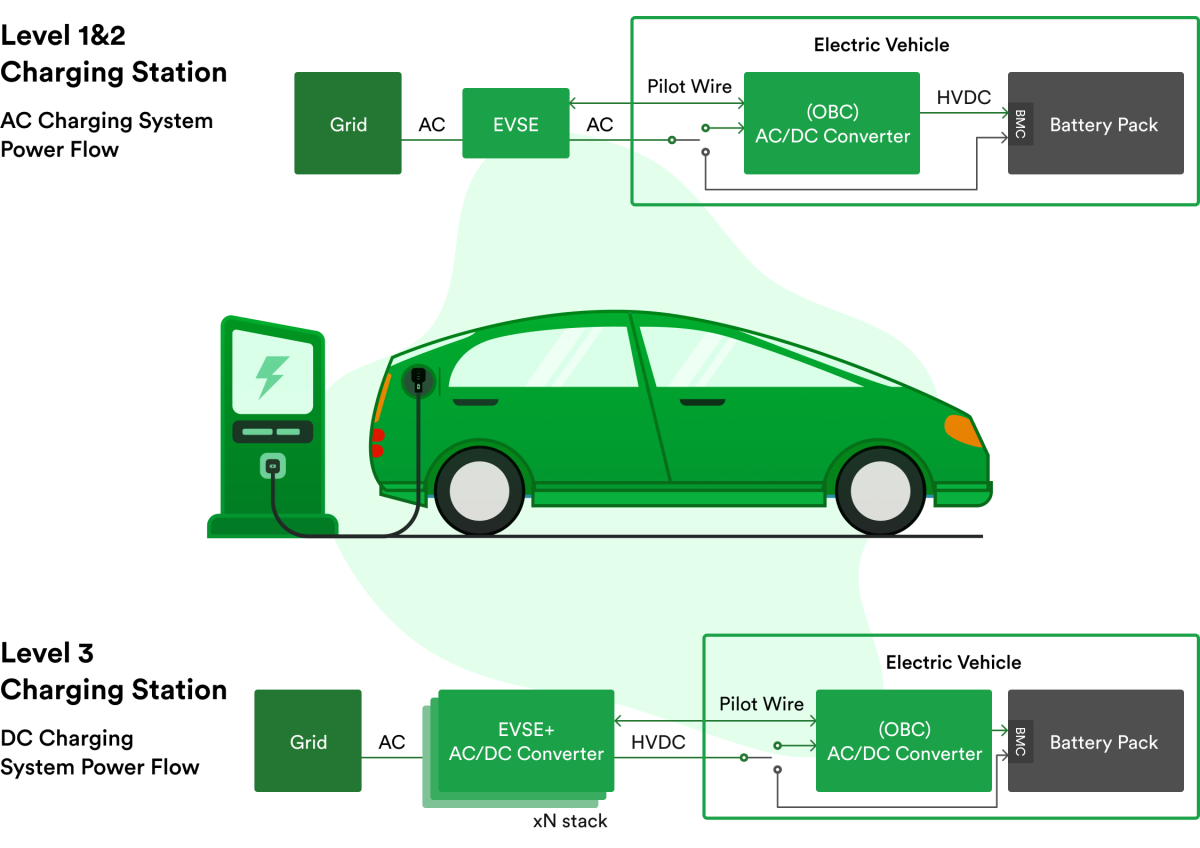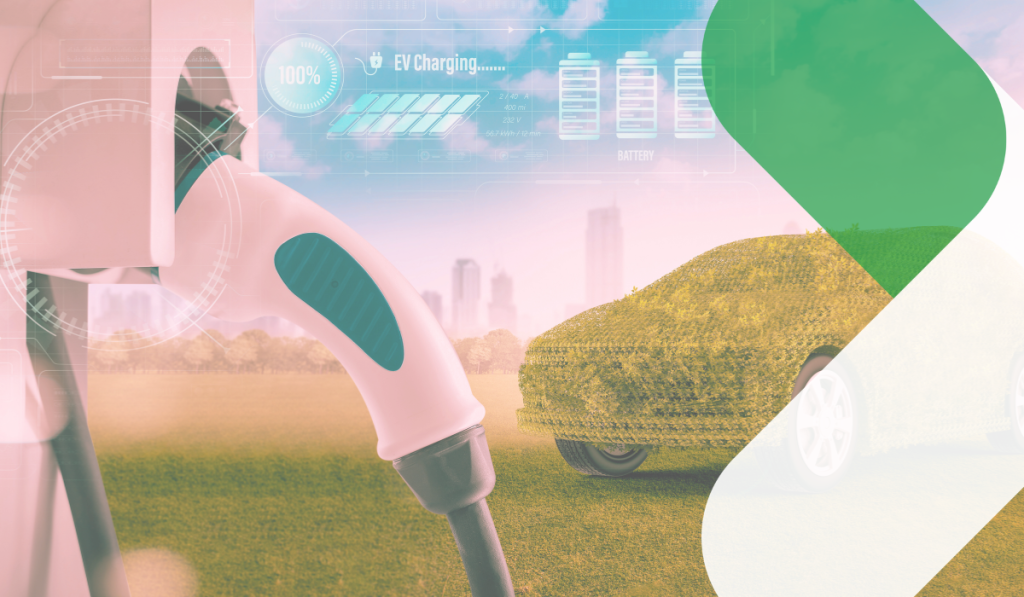
AI-Powered LiDAR: A New Era of Perception
How AI and ML enhance LiDAR technology by overcoming data processing challenges, enabling advanced applications in autonomous systems, robotics, and 3D mapping, and more.
Customers’ adoption of electric cars, driven by the desire to make environmentally responsible decisions, rising gasoline prices, attractive government subsidies, and lower cost of ownership throughout the vehicle’s lifecycle, is a crucial factor in the expansion of the EVCI industry.
Implementing a reliable charging infrastructure is crucial for the broad adoption of EVs. To relieve the spread of concerns and guarantee an effortless experience for EV owners, an effective and accessible charging network is essential. Long-distance travel is made possible, user convenience is improved, and a carefully laid out charging infrastructure accelerates the switch to electric mobility.
This article highlights current trends and best practices for setting up an EV charging infrastructure. We will examine the essential factors and procedures in setting up a successful charging network, from planning and design to installation and maintenance. The stakeholders can contribute to a sustainable future of transportation by making well-informed choices and understanding the essential aspects of EV charging infrastructure development.
The EV charging infrastructure is the charging station network and auxiliary systems needed to recharge electric vehicles. It includes a range of technologies and charging apparatus that make it easier to transfer electrical energy to the car’s battery.
Electric vehicle supply equipment (EVSE) or chargers are the main components of EV charging infrastructure, including charging stations containing these devices. These devices deliver electricity to the vehicle’s battery. To give EV owners easy access to charging stations, these charging stations can be built in various places, including public parking lots, neighborhoods, businesses, and roads.
The infrastructure for EV charging includes supporting systems and technologies and the actual charging stations. Examples are systems for administration and monitoring that enable operators to regulate and optimize the charging process, gather usage information, and conduct remote diagnostics and maintenance. These systems ensure the charging network runs well and allow service providers to offer users a seamless charging experience.
There are three types of charging solutions available for electric vehicles. They are classified into levels ranging from 1 to 3. Levels 1 and 2 are AC-type chargers, whereas Level 3 is a DC charger.
Level 1 chargers are the most affordable and accessible charging solution. They supply electricity to the car’s battery using a typical 120-volt AC household socket. Despite being the slowest option, Level 1 charging is suitable for overnight charging at home or in long-term parking facilities. It typically provides 2–5 miles/ 3-8 km of range per hour of charging. Most electric vehicles have level 1 chargers that don’t need additional setup or gear.
Compared to Level 1 chargers, Level 2 chargers provide quicker charging rates. They need a particular AC charging station to supply more power (often 240 volts). Level 2 charging can drastically shorten charging times by extending the range by 25–30 miles/ 40-50 km per hour. These outlets are typically found in offices, multi-unit residential buildings, and public charging stations. Installing Level 2 chargers frequently involves hiring a professional, and electrical changes may be necessary to accommodate the higher power consumption.
The fastest speeds for charging are offered by level 3 chargers, commonly referred to as DC fast or rapid chargers. They are powered by direct current (DC) rather than alternating current (AC), allowing quick charging. Depending on the car and the charger’s capabilities, level 3 chargers can extend the range of an electric vehicle by up to 200 miles/ 320 km in around 30 minutes. Most of these charges are placed along highways, at rest places, and in active regions. Compared to Level 1 and Level 2 chargers, Level 3 chargers demand technological infrastructure and are often more expensive to install.
There are several factors to consider when creating an EV charging infrastructure. The time needed to charge an electric vehicle entirely depends on the charging speed. To make charging stations more accessible, they should be strategically placed close to homes, businesses, retail establishments, and roads. Every EV owner can use the charging network thanks to compatibility, which guarantees that the infrastructure supports a variety of EV models and standards.

EV On-board Chargers and Charging Stations
The first step you need to consider when planning an EV charging infrastructure is the target audience. This infrastructure must be adapted to suit each of your client’s requirements. Detailed market research is essential to comprehend market interest in EVs, consumer needs, and current charging infrastructure. Considering variables like charging station quantity, variety, and distribution based on anticipated growth in the number of electric vehicles and consumer preferences is vital for estimating the size of the necessary infrastructure.
Assessing accessibility, closeness to power sources, and parking space accessibility are necessary for choosing the best locations for charging stations. Strategic positioning in congested areas can boost usage and convenience.
Developing a thorough timetable and budget that accounts for installation costs, equipment purchases, licensing, and ongoing maintenance is crucial. These elements can be thoughtfully planned for and considered to lay a strong foundation for expanding the EV charging infrastructure.
A full awareness of and respect for local and federal rules are necessary for developing an EV charging infrastructure. It is essential to learn about and adhere to the regulations for EV charging to prevent legal complications and guarantee user safety. After becoming familiar with the rules, detailed plans, technical requirements, and environmental impact, assessments should be submitted for review to start obtaining permits and permissions from the appropriate authorities.
The construction and operation of the charging infrastructure can be sped up by consulting with regional authorities and asking for their advice. The environmental impact must also be considered. By incorporating renewable energy sources like solar and wind power, greenhouse gas emissions can decrease and improve sustainability.
The carbon footprint of the charging network can be reduced by using renewable energy, helping to create a greener mobility ecology. Ultimately, developing a responsible EV charging infrastructure, expediting the deployment process, and promoting a sustainable future of transportation require prioritizing legal compliance, getting licenses, and addressing the environmental impact.
Tech companies have significantly supported the development of the EV charging infrastructure. They offer cutting-edge software solutions to enhance charging station performance, load management, and user experience. The infrastructure operations can be streamlined, and scalability can be guaranteed by collaborating with a renowned technology business.
Working with a technology company has several advantages. They can do this by putting in place clever algorithms and load-balancing mechanisms, which will assist in regulating the stress on the charging infrastructure. An experienced technology partner supports continuous innovation and ensures the infrastructure is current with changing market standards. Additionally, they provide scalability, manage routine software updates, and automate processes, resulting in practical operations and less maintenance work.
We at rinf.tech are dedicated to supporting the growth of EV charging infrastructure. We offer thorough help for charging station development thanks to our knowledge of automotive technology, software development, and sustainable solutions. The custom development and design solution in the P30 charging stations project that we delivered to one of our clients in the automotive industry ensures high-speed charging, compatibility, and a seamless user experience.
An efficient EV charging infrastructure depends on choosing suitable chargers. Consider the equipment’s scalability, compatibility with various EV models, and charging speed. To meet different charging needs, it is advised to choose a variety of charger kinds.
By considering variables like grid demand, electricity costs, and charging preferences, smart charging solutions optimize the charging process. These solutions make possible load control, demand response, and integration with renewable energy sources. Utilizing innovative charging technologies ensures resource efficiency and lowers expenses.
Consider including renewable energy sources like solar and wind to improve the infrastructure for charging. As a result, there is a decrease in the need for fossil fuels and the carbon footprint of the charging stations. Renewable energy can also save long-term costs and help create a greener energy ecosystem.
To ensure that charging stations are installed correctly, hire professional installation services.
Working with experts lowers the possibility of mistakes and guarantees that laws are being followed.
To keep the charging infrastructure in top shape, routine maintenance is necessary. Make a maintenance schedule that covers regular checks, equipment updates, and fixes. Predictive maintenance strategies and remote monitoring of the charging stations can reduce downtime and improve customer satisfaction.
The infrastructure for charging EVs must be adaptable and expandable as EV adoption rises. Prepare for improvements and growth to meet growing demand. Consider elements including space availability, electrical power, and the capacity to incorporate new technology. Scalable infrastructure accommodates the changing needs of EV owners and allows for smooth expansion.
Always strive to provide a variety of payment alternatives to accommodate different user preferences. Pay-as-you-go choices are more convenient for occasional users, whereas subscription-based ones are for regular users. The customer experience is improved, and the payment procedure is simplified by integrating with mobile apps or payment platforms.
Create user-friendly mobile applications or websites that let EV owners find and reserve charging stations, track their charging status, and send payments. Prioritize customer service and offer prompt assistance to resolve any problems or complaints. The adoption of EVs is promoted, and a seamless user experience fosters customer loyalty.
Consider accessibility when planning the infrastructure around the charging stations. Think about things like convenience to parking, visible signs, and user-friendly interfaces. Charging stations must be easy to locate, use, and available to those with disabilities. Promoting inclusivity and improving the overall EV charging experience are two benefits of accessible and user-friendly infrastructure.
A reliable EV charging infrastructure is essential for electric vehicles to be widely used. Range anxiety issues are addressed, long-distance travel is supported, and sustainable transportation is encouraged. Stakeholders support the expansion of the EV sector and reduce the environmental effect of conventional automobiles by investing in charging infrastructure.
It takes careful planning, comprehension of user needs, adherence to rules, and cooperation with technological partners to build an EV charging infrastructure. The target audience must be identified, market research must be done, the infrastructure size must be estimated, the right technology must be chosen, and a flawless user experience must be maintained.
Continuous innovation and research are vital as the EV market develops. To adapt and improve your charging infrastructure, keep up with new technology, legislative changes, and market trends. We can collectively sculpt a greener, cleaner transportation future by taking proactive measures and embracing the EV revolution.

How AI and ML enhance LiDAR technology by overcoming data processing challenges, enabling advanced applications in autonomous systems, robotics, and 3D mapping, and more.

Offering insights into how the latest AI advancements will impact consumers, manufacturers, and the broader environment in 2025 and beyond.

Showcasing the environmental and economic benefits of integrating sustainable materials and robust recycling practices into the automotive value chain.